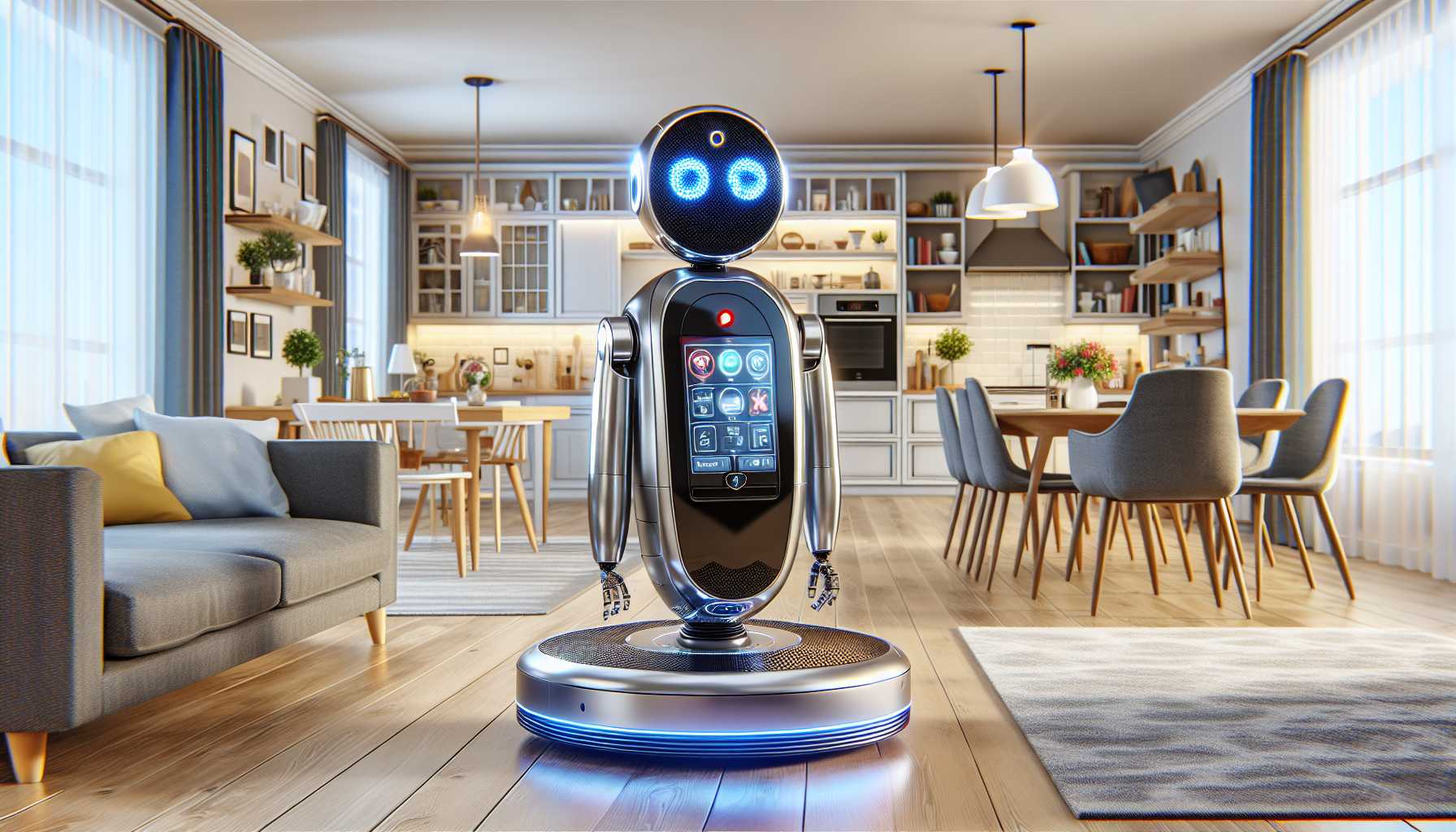 Welcome, tech enthusiasts and curious minds alike! As a seasoned tech investor and commentator, I’ve had my fair share of experience sifting through industry buzzwords and promotional fanfare to unearth the true gems of innovation. This year’s CES was no exception, touting ‘AI’ as the innovative centerpiece of every product in sight. But let’s get down to brass tacks: what made waves in the AI sphere at CES, really, and what was merely a repackaging of old tech with the ‘AI’ label slapped on for good measure?
Welcome, tech enthusiasts and curious minds alike! As a seasoned tech investor and commentator, I’ve had my fair share of experience sifting through industry buzzwords and promotional fanfare to unearth the true gems of innovation. This year’s CES was no exception, touting ‘AI’ as the innovative centerpiece of every product in sight. But let’s get down to brass tacks: what made waves in the AI sphere at CES, really, and what was merely a repackaging of old tech with the ‘AI’ label slapped on for good measure?
Branding Blender: The Misuse and Overuse of ‘AI’
 Let’s not beat around the circuit board: the term ‘AI’ has become so pervasive that it’s nearly lost all meaning. From voice assistants to robotic companions, companies are eager to ride the coattails of AI hysteria, even when their ‘artificial intelligence’ closely resembles a simple, algorithmic process we’ve seen for years. It’s like calling a spork an ‘advanced food ingestion device’—technically not wrong, but certainly overkill. The danger in this AI branding free-for-all is clear: consumer confusion and eventual disillusionment. When every gadget and gizmo claims AI superiority, how can the average Joe or Jane distinguish genuinely innovative AI technology from buzzword bloat? We need to be critical and cautious as we navigate this landscape. To quote Gartner analyst Arun Chandrasekaran, we risk muddying the waters and overpromising to consumers, which can only end in disappointment.
Let’s not beat around the circuit board: the term ‘AI’ has become so pervasive that it’s nearly lost all meaning. From voice assistants to robotic companions, companies are eager to ride the coattails of AI hysteria, even when their ‘artificial intelligence’ closely resembles a simple, algorithmic process we’ve seen for years. It’s like calling a spork an ‘advanced food ingestion device’—technically not wrong, but certainly overkill. The danger in this AI branding free-for-all is clear: consumer confusion and eventual disillusionment. When every gadget and gizmo claims AI superiority, how can the average Joe or Jane distinguish genuinely innovative AI technology from buzzword bloat? We need to be critical and cautious as we navigate this landscape. To quote Gartner analyst Arun Chandrasekaran, we risk muddying the waters and overpromising to consumers, which can only end in disappointment.
Fleet-Footed Feats of Engineering: Actual AI Victories
 Amid the AI cacophony, there are indeed genuine breakthroughs. Many products at CES, despite the noise, are cutting-edge marvels worth your attention. For instance, LG’s AI agent robot combines computer vision and robotics, pushing the envelope in both autonomy and user interaction. Or consider Samsung’s Ballie, a rolling companion robot with promising advancements—though not necessarily grounded in large language model (LLM) AI, it is a commendable innovation nonetheless. However, not every shiny object at CES deserves a round of applause. The question we must ask ourselves is whether these tech marvels remedy real-world concerns or if they merely add a light show to existing tools without genuinely increasing functionality. AI, like any other technology, must be wielded thoughtfully, with an eye for practicality and inclusivity.
Amid the AI cacophony, there are indeed genuine breakthroughs. Many products at CES, despite the noise, are cutting-edge marvels worth your attention. For instance, LG’s AI agent robot combines computer vision and robotics, pushing the envelope in both autonomy and user interaction. Or consider Samsung’s Ballie, a rolling companion robot with promising advancements—though not necessarily grounded in large language model (LLM) AI, it is a commendable innovation nonetheless. However, not every shiny object at CES deserves a round of applause. The question we must ask ourselves is whether these tech marvels remedy real-world concerns or if they merely add a light show to existing tools without genuinely increasing functionality. AI, like any other technology, must be wielded thoughtfully, with an eye for practicality and inclusivity.
The Finer Points of AI: More Than Just Chatbots
 As savvy onlookers in AI’s evolution, we know that generative AI and foundational LLMs are just one piece of the sprawling AI puzzle. Join me in my eye-roll at the thought of yet another ‘old-fashioned’ machine learning algorithm, which, despite its lack of novelty, continues to revolutionize pattern recognition at this year’s CES. Let’s give these algorithms their due rather than chasing the latest flashy buzzword. We see companies stretching the scope of AI, applying it to everything from inventory management to navigating complex social dialogues. It can be spellbinding to imagine how these technologies may reshape our world. But remember, AI technology must first prove its ability to enhance everyday life consistently before being hailed as the next world-altering development.
As savvy onlookers in AI’s evolution, we know that generative AI and foundational LLMs are just one piece of the sprawling AI puzzle. Join me in my eye-roll at the thought of yet another ‘old-fashioned’ machine learning algorithm, which, despite its lack of novelty, continues to revolutionize pattern recognition at this year’s CES. Let’s give these algorithms their due rather than chasing the latest flashy buzzword. We see companies stretching the scope of AI, applying it to everything from inventory management to navigating complex social dialogues. It can be spellbinding to imagine how these technologies may reshape our world. But remember, AI technology must first prove its ability to enhance everyday life consistently before being hailed as the next world-altering development.
The Multi-Million-Dollar Question: AI Investments
 The investment landscape in AI is as volatile as it is exhilarating. Companies like DigitalOcean are diving headfirst into the AI realm, looking to tap into the prodigious potential of SMB-driven AI applications. As a tech investor, it’s a thrilling prospect: backing an underdog that could democratize AI for the masses. Yet caution remains the watchword. Success in the AI space isn’t just about capital or hype; it’s about practicality, sustainability, and the technology’s tangible impact on everyday users. As much as AI stocks have been the golden geese of the stock market, discernment is critical. It is the technology’s real-world utility that will ultimately determine its staying power and financial viability. In conclusion, this year’s AI narrative at CES was intricate, multi-faceted, and sometimes downright confusing. But fear not—it’s through critical analysis and cautious optimism that we’ll navigate the vast and vibrant sea of AI innovation. The true gems of AI are out there, waiting to be discovered and to genuinely improve our world. So, let’s keep our eyes wide open, and our skepticism handy, as we unravel the true from the artificial in artificial intelligence.
The investment landscape in AI is as volatile as it is exhilarating. Companies like DigitalOcean are diving headfirst into the AI realm, looking to tap into the prodigious potential of SMB-driven AI applications. As a tech investor, it’s a thrilling prospect: backing an underdog that could democratize AI for the masses. Yet caution remains the watchword. Success in the AI space isn’t just about capital or hype; it’s about practicality, sustainability, and the technology’s tangible impact on everyday users. As much as AI stocks have been the golden geese of the stock market, discernment is critical. It is the technology’s real-world utility that will ultimately determine its staying power and financial viability. In conclusion, this year’s AI narrative at CES was intricate, multi-faceted, and sometimes downright confusing. But fear not—it’s through critical analysis and cautious optimism that we’ll navigate the vast and vibrant sea of AI innovation. The true gems of AI are out there, waiting to be discovered and to genuinely improve our world. So, let’s keep our eyes wide open, and our skepticism handy, as we unravel the true from the artificial in artificial intelligence.









